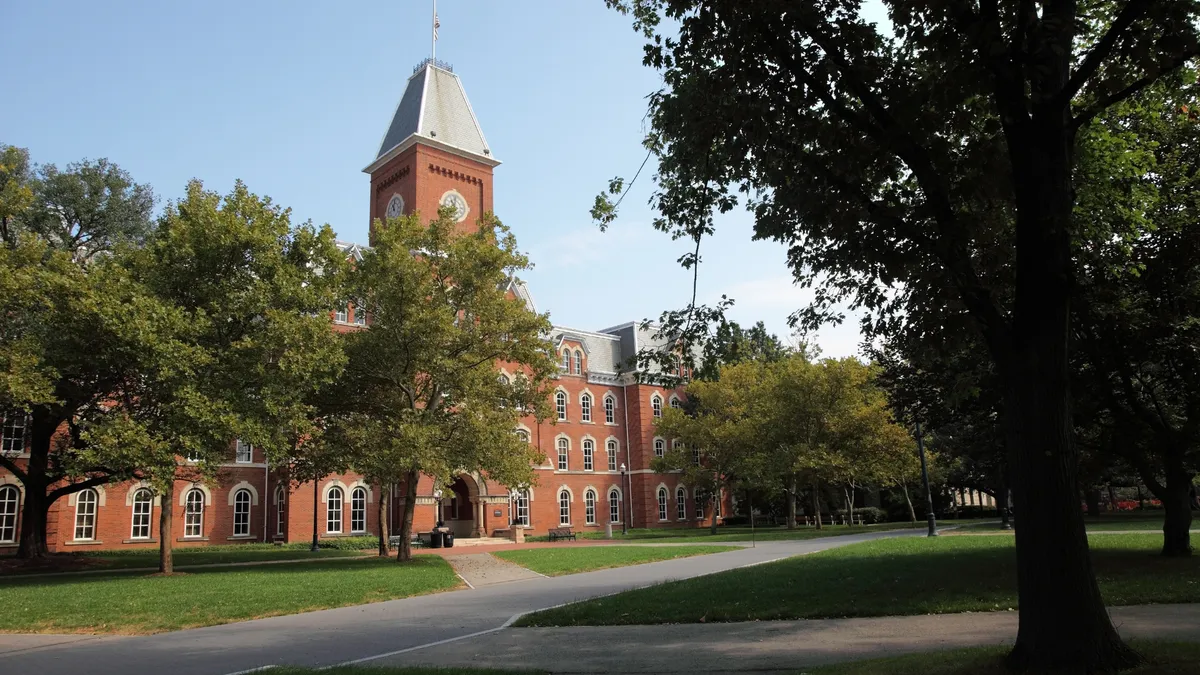Michigan State University had general liability coverage from the same insurance company for nearly two decades. Then it was revealed that one of its sports doctors had sexually abused hundreds of women and that top administrators knew of and mishandled complaints about his behavior.
After more than $500 million in settlements and fines and a coverage dispute, Michigan State's longtime insurer declined to include coverage for sexual misconduct related to the sports doctor and another official in the university's general liability policy, The Wall Street Journal reported. The university ultimately created its own insurance company to get coverage.
Most higher education institutions haven't had that degree of scandal, but they're still finding it tough to get insurance against sexual harassment, assault and abuse. As juries become more willing to penalize sexual misconduct — and their verdicts get more expensive — insurers are exiting the market or tightening their standards. That means schools that can get coverage are paying more for less.
"[Those changes have] really forced the insurers to … question whether or not they want to be in this market and what type of premium they need to be in this market," said Charles Moran, a senior vice president in the complex liability consulting practice at global insurance broker and risk advisory firm Marsh, in an interview with Education Dive.
An expensive trend
Universities' insurance difficulties are part of a slow-moving cultural shift that can be traced back to the recent sexual abuse scandals in the Roman Catholic Church, said Moran and others in the insurance industry. Those scandals triggered insurance issues for numerous dioceses and archdioceses around the U.S., some of which ended up in court. In 2011, the revelation of a major sexual abuse scandal at Penn State University brought that kind of attention to higher education, resulting in more than $100 million in settlements.
With the #MeToo movement, the zeitgeist moved even further toward large penalties for institutions perceived as covering up sexual misconduct. In 2019 alone, 16 states loosened their deadlines for suing over sexual abuse, according to advocacy group Child USA, increasing the number of potential lawsuits.
"You used to see where there'd be an isolated case, and now that's evolved into class action and national cases," Blake Wells, higher education practice lead at insurance brokerage IMA, said in an interview with Education Dive. "It's in the paper a lot more."
That's led to what Wells called "nuclear verdicts" — court decisions or out-of-court settlements 10 to 50 times bigger than what was common before the past decade. Insurers, who pay for those cases, have responded by tightening their offerings for new and existing clients.
Generally, colleges' coverage for sexual misconduct claims is included in their general liability insurance. In some cases, institutions may cover those claims through separate policies. An incident doesn't necessarily mean the school will lose that insurance — but a scandal like the ones at Penn State and Michigan State increases the chances substantially, because of the high costs of defending and paying the claims.
Insurers could become more restrictive in the coverage they offer, reduce their limits or even stop offering coverage for certain circumstances, such as sexual abuse and molestation, said Bryan Elie, vice president of underwriting at United Educators, in an interview with Education Dive. The insurer, prominent in the education sector, worked with Michigan State prior to its sexual abuse scandal.
Coverage is still available, but the remaining insurers are rethinking how they offer it. For example, some insurers are reducing their coverage limits substantially, Wells said, so a policy that would have covered up to $10 million in losses would now cover only $2 million.
Some insurers are also moving coverage out of their general liability policy to a separate, optional policy. Moran is seeing this more frequently. He called it an opportunity to buy the coverage back — but with more limits.
"It's going to be obviously at a higher premium," he said. "There are certain conditions that have to be met, more stringent timeframes that apply. ... The window for coverage narrows."
That's driven more higher education clients to insurer Beazley, which offers risk- and crisis management services bundled with a standalone sexual abuse and misconduct policy. Interest in that specialty product has grown as the market has changed, said Paul Nash, leader of Beazley's employment practices liability team.
Careful underwriting
Insurers that offer sexual misconduct coverage now require colleges to maintain stricter due diligence. They're asking institutions to demonstrate that they have strong policies and procedures against sexual misconduct and that those policies are backed by enforcement, training and background checks.
That's not just for prevention, Wells said — it's also to avoid being sued. "If you read the verdicts … a lot of it is for the lack of training and oversight — basically, failure to protect the students," he said.
Those policies and procedures should be more than just nice words, Elie said. Institutions need to show they respond appropriately when incidents arise.
"We really expect institutions to work on having that proper risk management if we're going to provide the coverage," he said. "And if they don't, the coverage would be excluded under our general liability policy."
That's even more crucial for institutions that have had recent sexual misconduct incidents serious enough to lead to litigation. They're generally expected to demonstrate what they learned from the experience to secure coverage.
Knowing schools are taking the situation seriously and addressing any issues makes insurance companies more likely to work with them, Nash said.
Legacy policies
Institutions might have favorable insurance coverage for older incidents, however. That's because general liability policies prior to 1986 were written to cover incidents that occurred during the policy period, regardless of when claims are made.
As Moran explained it, these so-called legacy policies are often advantageous for colleges. Typically, they demand the insurance company pay for schools' legal defense, and they often don't require schools to pay much or anything to defend themselves. They also don't usually have an exception for sexual abuse.
Still, Moran said, a school would need to prove it had the coverage, and then follow its terms, to make a claim. It could be tough even to find a policy from 1984.
"Insureds really need to think about … how are they preparing for these legacy claims that are going to come out of the woodwork," he said.
Insurance professionals said sexual abuse coverage is out there for institutions willing to take the steps to get it. Elie said United Educators has found its insureds open to improving their policies and procedures.
Those extra steps could pay off for everyone by reducing the chance of a situation like that at Michigan State, Nash observed.
"With greater awareness comes better risk management, and ultimately, improvements such that prevent bad things from happening in the first place," he said.

















